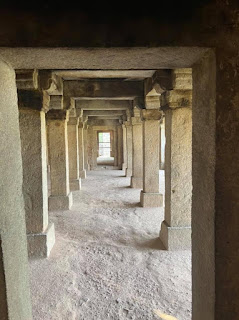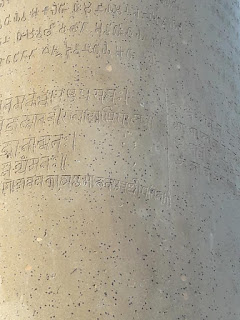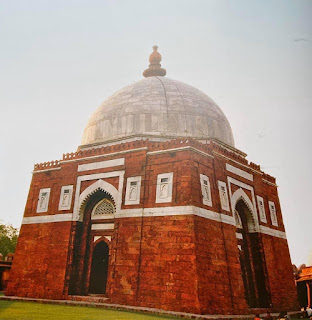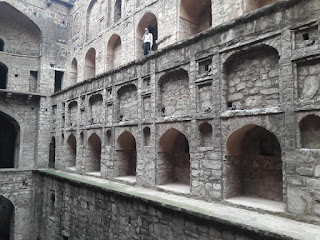Delhi Heritage Trail : 42
Hauz Khas
This heritage precinct near Green Park in South Delhi is a repository of more than 700 years old Tughlaq Era buildings. It was here in the year around 1300 that Alauddin Khilji excavated a tank to provide water to the inhabitants Siri the city founded by him. It was originally called Hauz-I-Alai. Firoz Tughalak who ruled after 50 years from 1351-1388 desilted the tank and built a Madrasa on the periphery of the tank on the west which was the biggest Islamic learning centre at that point of time. The complex was also renamed Hauz Khas by him.
Firoz Shah who was the son of a Hindu Princess also built a tomb for him in the complex during his lifetime and during his rule the Tughlaq era architecture was honed and refined. He choose to be buried so far away from his capital city of Feroz Shah Kotla. His tomb standing on a square plinth with sloping walls and lofty domes looks majestic in the complex. The entrance gate to the Tomb on the south is a mix of Islamic and Hindu architecture with an Islamic arch and Hindu stone railings below. Here he lies buried along with his two sons and a grandson. The tomb was repaired in 1507 during Sikandar Lodi’s reign.
Scattered in the premises are pillared Chatris and miniature tombs supposed to be tombs of nobles, principal and teachers of the Madrasa. The Hauz Khas complex is reached by a narrow road inside the Hauz Khaz village which abounds in high end shops and restaurants and is a hangout spot of the rich and the heritage complex seaming with youngsters.


















































